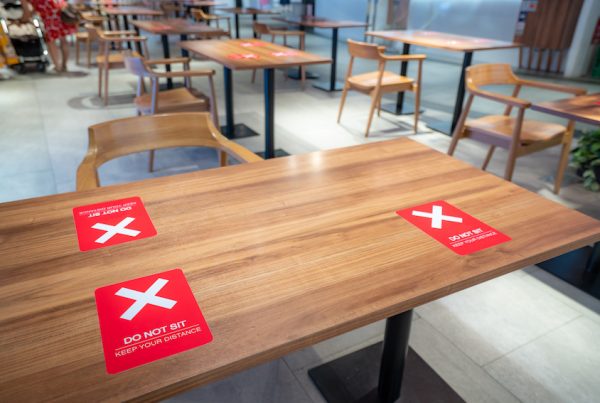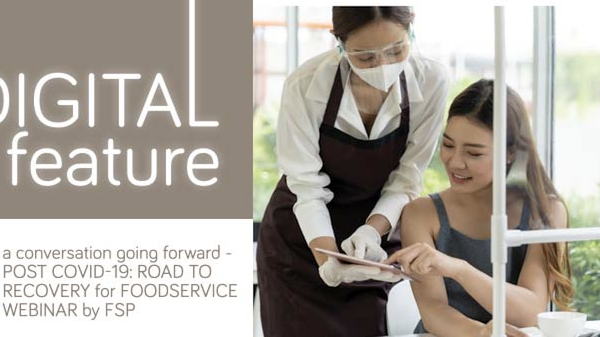Getting your products on the shelves can be done in a variety of ways; and it does not necessarily mean only in the supermarkets. We spoke to a few businesses involved in retailing and they shared how it can be done differently – letting others carry your brand, retailing homemade products within your restaurant and one that star ted as retail and extended into operations of a restaurant.
PROJECT C
From A Home Kitchen To Your Cafe

What star ted as feeding her workmates at myBurgerLab with her cake experiments is now a full-fledged business supplying cakes to cafes around Klang Valley, Malaysia. When Head Baker, Lor Mei Leng finished her studies in culinary arts, the owners of myBurgerLab offered her their existing kitchen space to prepare cakes which were initially sold alongside the burgers. However, Mei Leng soon discovered that burgers and cakes did not necessarily make the best combination. Diners get too full after a burger. Plus, the reputation of myBurgerLab is set in its niche and people hardly would visit just for cakes.
 At a time where the cafe scene was booming, Project C decided to fill the gap (too many cafes, not enough bakers) instead of opening its own shop. The challenge of retailing this way lies in more leg work required to sell its products and Mei Leng said they were knocking on cafes’ doors, providing samples and prices. We asked if Project C has preferences when supplying to clients – does it see if the concept of a particular cafe suits its brand and style of cakes? Mei Leng says it does not matter much though she does think it is responsible to advise a client to order just enough if the cafe intends for cakes as supplementary only or where crowds are not expected on weekdays, for example. Being a supplier can leave one to have less to no control after products leave its premises. Despite advising clients on the best way to handle cakes, there is still a chance of mishandling or some external factors that can jeopardise the quality of the products.
At a time where the cafe scene was booming, Project C decided to fill the gap (too many cafes, not enough bakers) instead of opening its own shop. The challenge of retailing this way lies in more leg work required to sell its products and Mei Leng said they were knocking on cafes’ doors, providing samples and prices. We asked if Project C has preferences when supplying to clients – does it see if the concept of a particular cafe suits its brand and style of cakes? Mei Leng says it does not matter much though she does think it is responsible to advise a client to order just enough if the cafe intends for cakes as supplementary only or where crowds are not expected on weekdays, for example. Being a supplier can leave one to have less to no control after products leave its premises. Despite advising clients on the best way to handle cakes, there is still a chance of mishandling or some external factors that can jeopardise the quality of the products.
 Growth for Project C has been reasonable over the last few years and the founders recognise that its rate for exposure is different from a standalone cafe. This is because some cafe owners prefer not to say cakes are supplied and most customers will take for granted all products came from the cafe itself. However, Mei Leng takes this positively and says that a steady rate helps them better manage, ensure consistency and be more thorough in planning the next step. After observing diners’ pattern of cake preferences, they came up with a menu, production timelines and their clients also understand when orders need to be placed due to the production requirements – some cakes, like the tou foo fah cheesecake needs 1 day to set.
Growth for Project C has been reasonable over the last few years and the founders recognise that its rate for exposure is different from a standalone cafe. This is because some cafe owners prefer not to say cakes are supplied and most customers will take for granted all products came from the cafe itself. However, Mei Leng takes this positively and says that a steady rate helps them better manage, ensure consistency and be more thorough in planning the next step. After observing diners’ pattern of cake preferences, they came up with a menu, production timelines and their clients also understand when orders need to be placed due to the production requirements – some cakes, like the tou foo fah cheesecake needs 1 day to set.
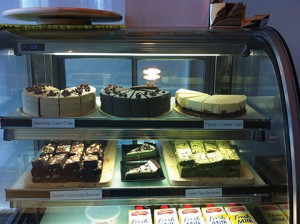 Having built the brand over the years, Project C intends to remain in the retail line via supply and distribution. Asked to describe her cakes’ selling point, Mei Leng would say they are “familiar to evoke certain memories and with little tweaks as diners nowadays seek new experiences yet would not stray too far from comfort”. It is currently setting up its own central kitchen that would be able to accommodate production of about 150 cakes a week. The space will also allow them to take orders for customised cakes and further expand their services of creating special menus for events. Taking its time to analyse the market needs and develop accordingly with measured steps proves to work for Project C! Facebook.com/Project C
Having built the brand over the years, Project C intends to remain in the retail line via supply and distribution. Asked to describe her cakes’ selling point, Mei Leng would say they are “familiar to evoke certain memories and with little tweaks as diners nowadays seek new experiences yet would not stray too far from comfort”. It is currently setting up its own central kitchen that would be able to accommodate production of about 150 cakes a week. The space will also allow them to take orders for customised cakes and further expand their services of creating special menus for events. Taking its time to analyse the market needs and develop accordingly with measured steps proves to work for Project C! Facebook.com/Project C
Projectc.caketherapy@gmail.com
MOFO CHILI
Spicing Up Meals At Home; And Then A Restaurant
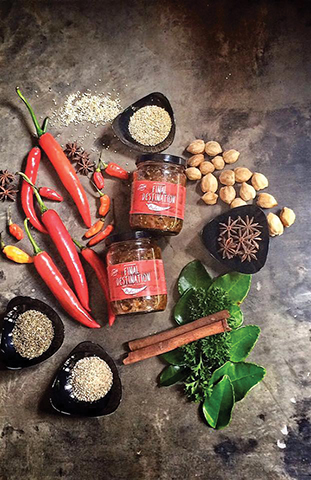 Sometimes we want a little perking up for our meals that’s why sauces and condiments exist. Spice is welcomed by many Southeast Asians, in fact, some claim they can’t do without. This sparked the founding of MOFO CHILI – a spicy condiment that is versatile enough for cooking, marinating and dipping. It aims to heightens your meal without altering the original taste of it. A combination of Monica and Steffi’s (nickname Foi) names, MOFO CHILI was initially cooked in their home’s kitchen and sold to family and friends.
Sometimes we want a little perking up for our meals that’s why sauces and condiments exist. Spice is welcomed by many Southeast Asians, in fact, some claim they can’t do without. This sparked the founding of MOFO CHILI – a spicy condiment that is versatile enough for cooking, marinating and dipping. It aims to heightens your meal without altering the original taste of it. A combination of Monica and Steffi’s (nickname Foi) names, MOFO CHILI was initially cooked in their home’s kitchen and sold to family and friends.

Call it vision, but they saw potential in their product and decided to go big at an early stage. They rented a central kitchen which allowed them to produce 100-150 bottles of the chili in about 10 hours as most tasks were still done by hand – from plucking chilis, blending the ingredients, to washing the bottles. This enabled them to always be prepared for the many farmers’ markets they attend as well as to enter the dining scene by partnering restaurants. Their next target market were supermarkets and to get in, Singapore’s regulations required production premises to be certified. For them, it made sense to partner someone who already has the cer tification and Standard Operating Procedures in place. They star ted speaking to a local factory in October 2015 and by February 2016, the factory ran MOFO CHILI’s first batch of products.
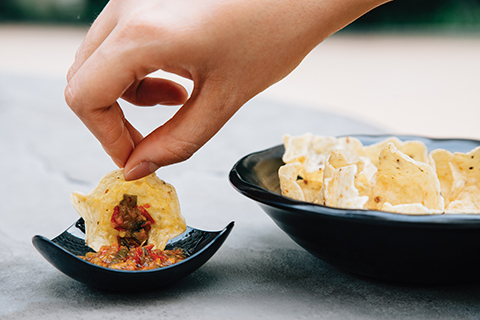
MOFO CHILI recently clinched its first supermarket partner in ISETAN. Monica suggests that one considers the business model e.g., “do they want to keep their product fresh?” or can some adjustments be accepted to meet requirements in production volume and better shelf life of product? Also, how much production budget do you have? Is it your core business or supplementary? These would determine the direction you’ll want to take when retailing your products. In selecting retail partners, MOFO CHILI chose to go with gourmet and artisanal retail partners who are selective with the products they carry. As each retailer is different in their terms, it is also about being flexible to work around it.
 As MOFO CHILI became more established in Singapore, the sisters saw it fit to extend their reach; more presence in supermarkets is definitely one – they have also opened a MOFO Kitchen in Bali. From production to operations is quite a leap but Bali holds promise. Being a tourist paradise and Indonesians liking spicy food, the kitchen draws inspiration from classic Western comfort food and infuses them with bold and defined flavours of Indonesia, especially Manadonese food from North Sulawesi. It hasn’t forgotten the spicy element of MOFO CHILI but gives a fresh take to the typical all- day breakfast, brunch, and lunch selections in Bali. In Monica and Foi’s world, it is all about the spice and their snazzily named Mofo Gunpowder, Dodge the Bullet and Final Destination condiments has definitely graced plenty meals and is proven to work with practically any sort of cuisine!
As MOFO CHILI became more established in Singapore, the sisters saw it fit to extend their reach; more presence in supermarkets is definitely one – they have also opened a MOFO Kitchen in Bali. From production to operations is quite a leap but Bali holds promise. Being a tourist paradise and Indonesians liking spicy food, the kitchen draws inspiration from classic Western comfort food and infuses them with bold and defined flavours of Indonesia, especially Manadonese food from North Sulawesi. It hasn’t forgotten the spicy element of MOFO CHILI but gives a fresh take to the typical all- day breakfast, brunch, and lunch selections in Bali. In Monica and Foi’s world, it is all about the spice and their snazzily named Mofo Gunpowder, Dodge the Bullet and Final Destination condiments has definitely graced plenty meals and is proven to work with practically any sort of cuisine!
www.mofochili.com / www.mofokitchen.com
SIMPLY MEL’S
From The Restaurant Into Your Home
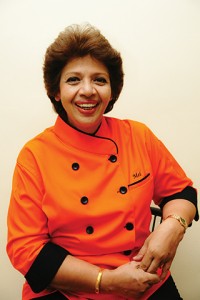 A cornerstone of the Malaccan-Por tuguese heritage, Kristang dishes such as Devil’s curry, Portuguese baked fish or condiments like saltfish pickle are rare in restaurants. It is not everyday one visits Simply Mel’s in Kuala Lumpur to savour them. Of course, the smart step was to go into bottling so that people could have these foods at home. They would go to weekend bazaars or pop-up markets but when demand increased, so did the challenges. Owner Cheryl Victor said, “Manual bottling can be a messy affair. Stains on the label, inconsistent amounts in bottle and exposure to contamination”. Coming from a non-food science background meant that both Cheryl and her mum, Chef Melba Nunis tested their products’ shelf-life the layman way. They would leave them in room temperature, in the car, or in the fridge and monitor its deterioration. Aside from risking the brand’s image, she found that profit margins did not make all the effort worth it.
A cornerstone of the Malaccan-Por tuguese heritage, Kristang dishes such as Devil’s curry, Portuguese baked fish or condiments like saltfish pickle are rare in restaurants. It is not everyday one visits Simply Mel’s in Kuala Lumpur to savour them. Of course, the smart step was to go into bottling so that people could have these foods at home. They would go to weekend bazaars or pop-up markets but when demand increased, so did the challenges. Owner Cheryl Victor said, “Manual bottling can be a messy affair. Stains on the label, inconsistent amounts in bottle and exposure to contamination”. Coming from a non-food science background meant that both Cheryl and her mum, Chef Melba Nunis tested their products’ shelf-life the layman way. They would leave them in room temperature, in the car, or in the fridge and monitor its deterioration. Aside from risking the brand’s image, she found that profit margins did not make all the effort worth it.
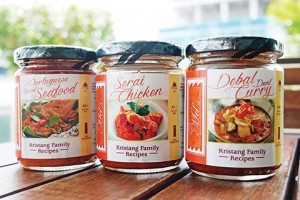 Ultimately, supermarket shelves were their target but they did not have a production facility that met regulations. Hence, they engaged Mark’s Food Solutions that was certified locally in terms of food safety, halal as well as the necessary recognition from relevant bodies. Cheryl highlighted the professionalism as a non-disclosure agreement was signed before work began. The producer would work on tweaking the recipe for bigger volumes and bring it for Chef Melba for feedback and the process continues until the Chef is satisfied. Cheryl also appreciates Mark’s dedication as he does not talk about payments until they approve the product.
Ultimately, supermarket shelves were their target but they did not have a production facility that met regulations. Hence, they engaged Mark’s Food Solutions that was certified locally in terms of food safety, halal as well as the necessary recognition from relevant bodies. Cheryl highlighted the professionalism as a non-disclosure agreement was signed before work began. The producer would work on tweaking the recipe for bigger volumes and bring it for Chef Melba for feedback and the process continues until the Chef is satisfied. Cheryl also appreciates Mark’s dedication as he does not talk about payments until they approve the product.

Talks are ongoing to have Simply Mel’s products to enter the overseas market, particularly in United Kingdom, Australia and America. Through this process, Cheryl’s personal observations on marketing includes:
• Connect with a distributor who will speak to retailers on your behalf.
• Retailer to price or you control the price? The retailer might know its buyers’ spending power better but it might also cause disparity of prices in different places.
• Do you want to market via consignment? This means any unsold products near the expiry date will be returned to you. Or sign off everything to the retailer to handle?
• How much profit to the retailer is comfortable for you? To export means you need to factor in freight for warding and landing costs into your final product selling price.
• Re-branding is necessary. Find out how people of each country react to product packaging – some visuals may appeal to country A but not B.
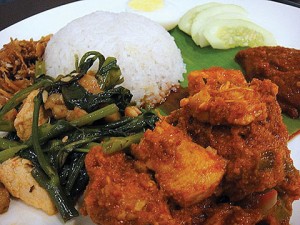 Working with a local manufacturer has taken a big load off the kitchen’s shoulders as what is bottled is also used by the restaurant. This allows Chef Melba more time and to focus on ensuring foods’ quality and customer engagement while Cheryl strategises pathways to promote Simply Mel’s specialties. Recently winning the “Best in the World Woman Chef”in the Gourmand World Cookbook Awards with A Kristang Family Cookbook, Chef Melba wants to remind Malaysians, whether at home or abroad and adventurous eaters to Beng Naki Kumi (Come here and eat!) with herready-made pastes and condiments.
Working with a local manufacturer has taken a big load off the kitchen’s shoulders as what is bottled is also used by the restaurant. This allows Chef Melba more time and to focus on ensuring foods’ quality and customer engagement while Cheryl strategises pathways to promote Simply Mel’s specialties. Recently winning the “Best in the World Woman Chef”in the Gourmand World Cookbook Awards with A Kristang Family Cookbook, Chef Melba wants to remind Malaysians, whether at home or abroad and adventurous eaters to Beng Naki Kumi (Come here and eat!) with herready-made pastes and condiments.
www.simplymels.com
FRESH FREDDIES
As Close As Freshly Cooked
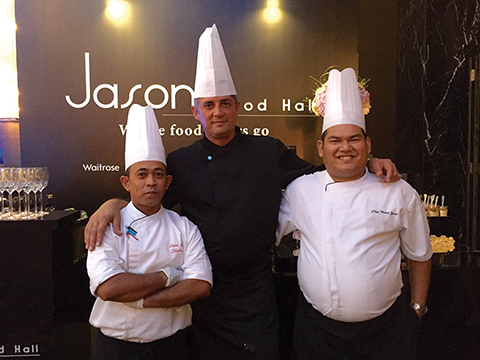
For us who don’t have time to cook or maybe we love cooking but sometimes, it is just not possible. Yet we still want the freshly prepared food experience. And this is where Fresh Freddies fulfills. Its ready-to-eat (RTE), pre-packed or packed-on-demand wholesome meals can be bought from major supermarket chains around Klang Valley. Products include pies, quiche, pasta, antipasti, meat dishes, Asian and Western meals, sandwiches, paninis, salads, cakes, and desserts. Mostly prepared, cooked and distributed from its central kitchen, Chef Neil Frediani, the company’s Executive Chef and Director, says that certain items are done on-site in respective supermarkets especially items that are constantly available on the counters. This allows chefs back in the central kitchen to experiment on new items to introduce and frees them from the routine cooking procedures as “customers want to see something different and new yet the staples have to be there”, Neil said.
 Retailing food in this manner requires constant monitoring especially when food is out on display. All Standard Operating Procedures (SOP) are set by Fresh Freddies and the foodservice managers of each retail outlet is responsible to oversee food quality. For example, when to refill and/or replace the food. Managing without a physical restaurant can be a bit trickier as Fresh Freddies need to know how to balance the amount of food on the counter vs customer flow. While Neil would love to have a full counter at all times; he also needs to be realistic about potential waste that will be generated and will re-purpose what they can to minimise waste. Ready-to-eat may not be a restaurant but it does not mean interaction is lost; he encourages staff behind the counter to engage with customers to motivate purchase; not “just scoop and weigh”the product – sometimes he would even go behind the counter and “be a little cheeky”and get a conversation going!
Retailing food in this manner requires constant monitoring especially when food is out on display. All Standard Operating Procedures (SOP) are set by Fresh Freddies and the foodservice managers of each retail outlet is responsible to oversee food quality. For example, when to refill and/or replace the food. Managing without a physical restaurant can be a bit trickier as Fresh Freddies need to know how to balance the amount of food on the counter vs customer flow. While Neil would love to have a full counter at all times; he also needs to be realistic about potential waste that will be generated and will re-purpose what they can to minimise waste. Ready-to-eat may not be a restaurant but it does not mean interaction is lost; he encourages staff behind the counter to engage with customers to motivate purchase; not “just scoop and weigh”the product – sometimes he would even go behind the counter and “be a little cheeky”and get a conversation going!
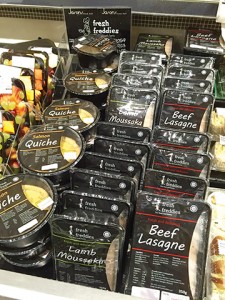 Coming from an Italian household, handmade and fresh are important ethos which set the direction for Fresh Freddies. Most products have a 7-day shelf life but a 5-day stamp is typically put on them in case customers decide to keep them for longer. While going frozen would seem sensible for cost efficiencies and a wider market reach, it is still a plan in development. For now, Fresh Freddies is positive about developing more fresh ready-to-eat products for the Malaysian market. And, its clients agree – evident by its participation at the upcoming Malaysian International Gourmet Festival (MIGF 2016) where Fresh Freddies’ products will be introduced under the umbrella of GCH Retail. Soon, it will operate the ready-to-eat section of supermarkets in high visibility areas like Suria KLCC and Solaris Dutamas. On top of that, a possible Freddies Deli is in the plan where Neil and his team can import unique foods and tailor more unique experiences for its customers. You’ll want to be on a lookout for them if your eating habits speak “fresh!”
Coming from an Italian household, handmade and fresh are important ethos which set the direction for Fresh Freddies. Most products have a 7-day shelf life but a 5-day stamp is typically put on them in case customers decide to keep them for longer. While going frozen would seem sensible for cost efficiencies and a wider market reach, it is still a plan in development. For now, Fresh Freddies is positive about developing more fresh ready-to-eat products for the Malaysian market. And, its clients agree – evident by its participation at the upcoming Malaysian International Gourmet Festival (MIGF 2016) where Fresh Freddies’ products will be introduced under the umbrella of GCH Retail. Soon, it will operate the ready-to-eat section of supermarkets in high visibility areas like Suria KLCC and Solaris Dutamas. On top of that, a possible Freddies Deli is in the plan where Neil and his team can import unique foods and tailor more unique experiences for its customers. You’ll want to be on a lookout for them if your eating habits speak “fresh!”

Facebook: Fresh Freddies
MARK’S FOOD SOLUTIONS
From the Solution Provider
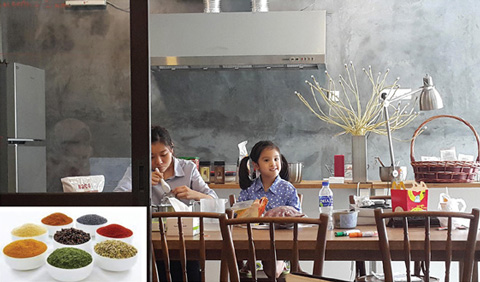
If you wish to have food products available on commercial shelves, the kitchen that prepares it needs to be properly equipped and pass stringent regulations. And for many businesses, operating another kitchen is too huge an under taking. Thus, they would seek Mark’s Food Solutions (MFS) to prepare, cook and pack these products as its facilities are built to meet such demands. Executive Director, Mark Kenny Douglas said their services aim to add value to clients’ businesses by providing them with consistent products. For example, a business may have a central kitchen to produce food for all its outlets yet outlet expansion often moves quicker than kitchen expansion. When the centralised kitchen is tight on resources, they can outsource some items to MFS to produce. By having some load off their shoulders, kitchens can shift their focus to core products, thus improving efficiency.
Food businesses that approach MFS have 4 options:
• Standard recipes developed by MFS to be used as it is
• Request to alter standard recipes according to personal taste
• Provide own recipes for MFS to produce. A NonDisclosure Agreement (NDA) is signed where MFS only produces exclusively for you
• Conduct R&D when client has a product idea but neither MFS or client has a recipe. The recipe will belong to whichever par ty bears the R&D cost
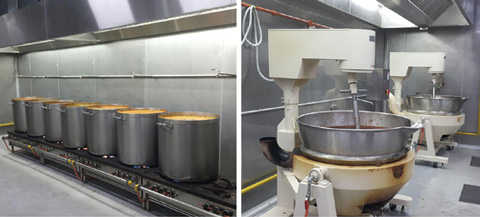
It may seem as simple as bringing your tried-and-tested recipes to MFS and ask for 1000 portions; and all the team needs to do is multiply the recipe. However, it is more than that. Mark explains that they have to understand the client’s market size and demography before proposing production run intervals as it needs to lock in raw materials; especially if imported ingredients are part of the recipe. There are many other variables to consider in reaping the final yield but one factor that Mark highlighted is the equipment used – evaporation rate in a wide-bottomed wok will differ from a tall pot so the resulting taste or texture could be different. Along this line, he also said that MFS continuously evolves its standard recipes; sometimes due to external circumstances or an internal decision, a recipe is recalibrated to achieve a consistent taste.
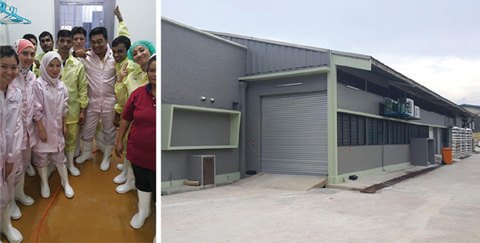
We took a walk around MFS’s facilities that is Halal-certified and is in the process of getting itself HACCP-certified as many food establishment clients demand this assurance so that their products would be guaranteed safe. It is not built like a typical production line because the ser vice is flexible as it will produce sauces, pastes, even certain dishes from as low as 50 kilograms to 20,000 kilograms – a setting that allows plenty of room for business entities to work around partnering MFS to produce various food items.
www.marksfoodsolutions.com








